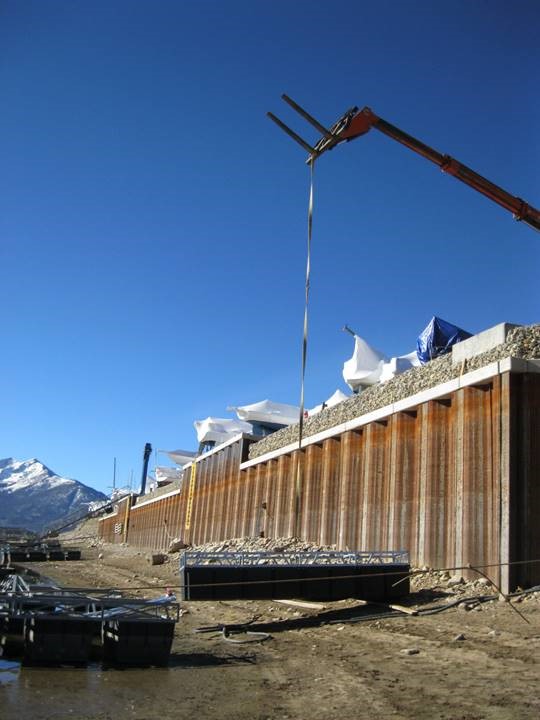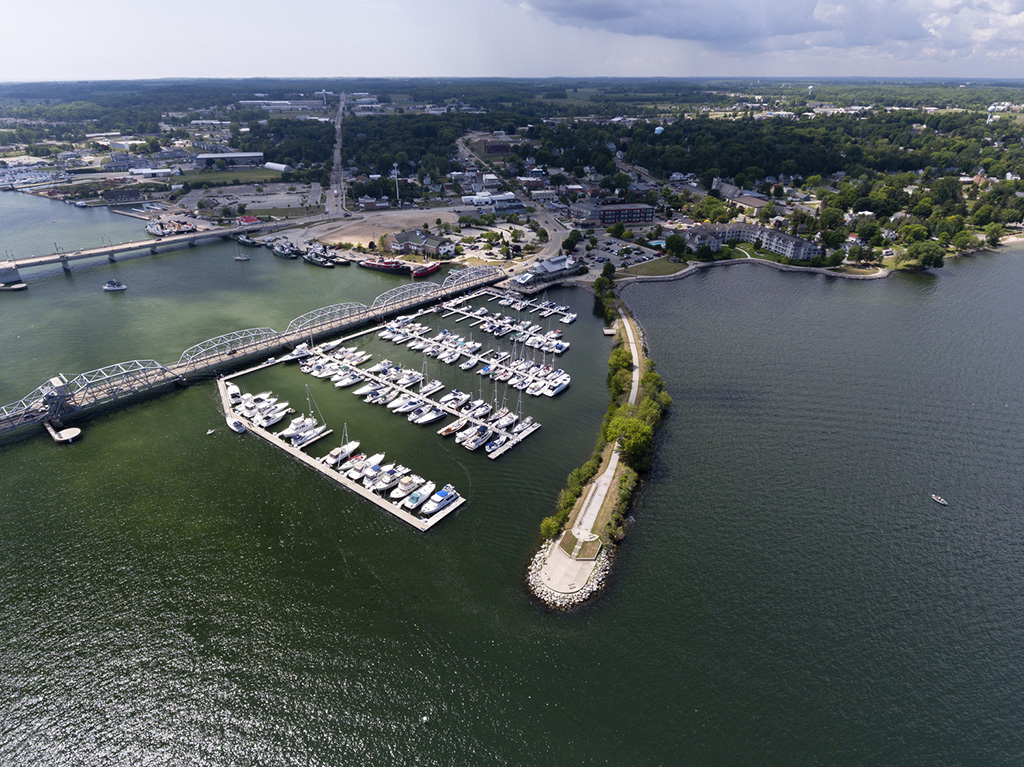Climate change is a politically and emotionally charged topic. At the end of the day, waterfront designers and engineers focus on one important thing: the science. Designing resilient and robust marinas, waterfront recreational facilities and associated landscapes means thinking beyond the current state of the elements; it means preparing for radical changes in weather and water levels, with projects that can withstand extremes.
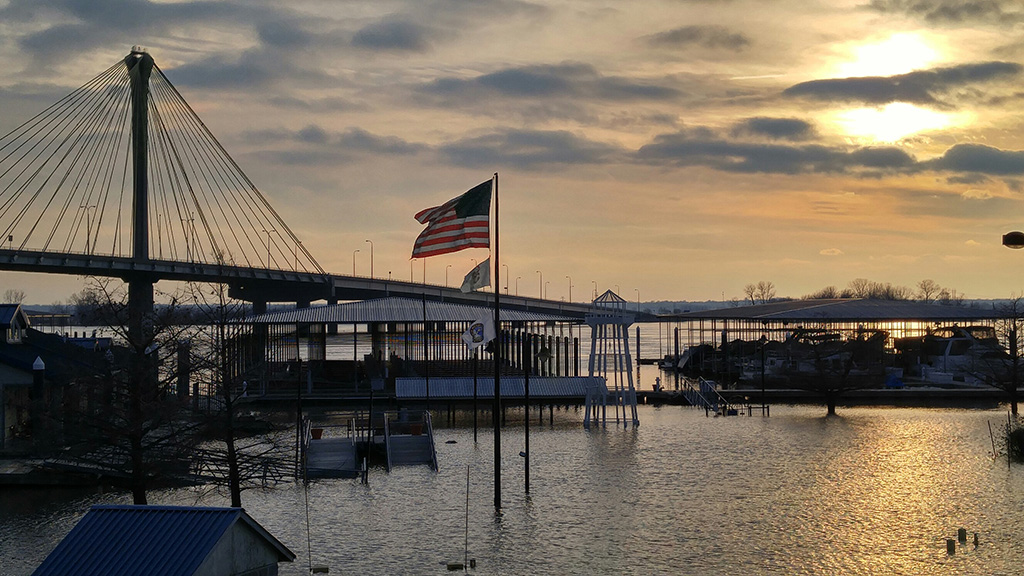
Major marina flooding event in 2016 – Alton, Illinois
According to the U.S. Climate Resilience Toolkit, an inter-agency initiative operating in collaboration with the United States Global Change Research Program, we saw a 42 percent increase in extremely heavy precipitation events across the Midwest between 1958 and 2016 – a number that has been steadily climbing. In the waterfront design community, we are learning to deal with the associated changes and begin by determining what conditions may be expected. What are the bounds of the possible challenges? How do we meet those challenges?
Designers will need to change their approach. We design to accommodate by understanding the possible limits — both high and low — and by understanding flow behaviors and possible secondary effects. We manage by designing to sustain these loadings and by understanding what we can quickly recover from. For existing facilities, we strive to keep them operable to the greatest extent reasonable and work to maintain survivability beyond that point. We also understand there are components that are beyond our control, such as extra siltation that can accumulate in basins, parking areas or surrounding green spaces after a flooding event.
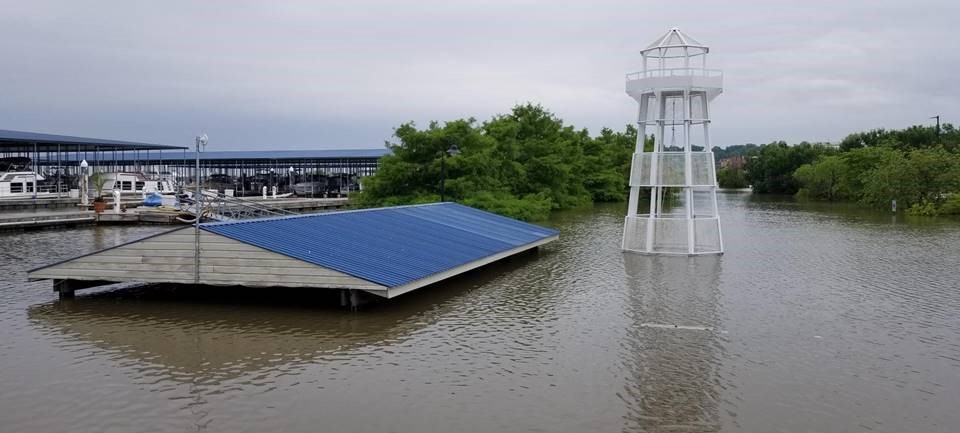
Marina parking lot flooding – Alton, Illinois
Understanding the limits of water bodies
For lakes and rivers of all sizes, it is important to first improve our understanding of the limits of water bodies. Changes in wind, temperature and precipitation all play important roles, but climate change most impacts precipitation. This equates to wilder swings in rainfall, increased flooding and wave size, and potential corresponding periods of drought. On average, the United States has seen relative increases in very heavy precipitation across every region – the type of rainfall that causes flash flooding and major increases in flood heights in major bodies of water. According to the U.S. Army Corps of Engineers (USACE), water levels on each of the five Great Lakes started 2020 with even higher levels than they did in 2019 – a year that already topped records. Lake Michigan and Lake Huron are already more than three feet above average, Lake Erie more than two feet, and Lake Superior and Lake Ontario both surpassing 16 inches above average levels. Many rivers across the region have reached record highs as well.
How climate change impacts marina and waterfront design
Historically, many waterfront designers have looked to the Federal Emergency Management Agency (FEMA) for predicted flood elevations and flood maps, but FEMA maps should not be the sole resource used for design controls. Rather, designers need to gain an understanding of existing USACE parameters, use conservative data where applicable, take a long-term approach to design and never assume, “It can’t happen here.”
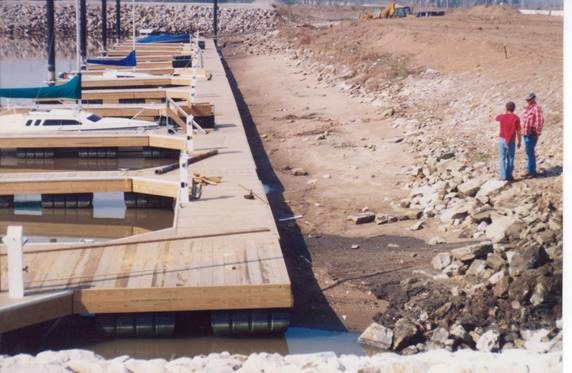
In addition to major rain events, certain areas are experiencing dramatic periods of drought with accompanying extremely low water levels. Waterfront designers need to expect higher highs and lower lows when it comes to water levels – designs that require taller, deeper and more substantial structures. These swings between highs and lows are expected to increase, making it increasingly more difficult to design for new or expanded waterfront structures that can withstand the entire range of conditions.
A good first step in design is to look at the historical data of the body of water. When have floods occurred in the past? What flood predictions or experiences can inform the design? It can, unfortunately, be presumed that equal or greater flooding will occur at the site, and perhaps within a shorter time frame than predicted.
Secondly, one must perform a thorough assessment of all waterfront infrastructure and its resiliency. Structures should either be engineered to float or be otherwise flood resilient. Anchoring systems must meet the more intensive loadings that come with flood events. Systems with pile anchorings need to accommodate longer heights and higher loadings. Cable and winch systems must do the same. Pile lengths may vary, and should accommodate the worst feasible flood conditions, with allowances for future corrosion factored into the design. Docks with underwater trusses must adapt to accept both high water and unusual water level drawdowns. Fuel storage tanks need to be anchored or located to avoid unintended loadings during floods. Finally, all waterside utility connections must be waterproof or located to minimize risk.
Proactive versus reactive waterfront design
The investment in proactive, climate-resilient design in our marinas and waterfront recreational facilities will serve communities well in comparison to the costs associated with rebuilt or salvage projects. Our industry has adapted to meet these challenges and must continue to adapt as climate change impacts continue.
Our world is an exciting and wonderful environment to experience. It is up to us as designers, builders and community leaders to develop facilities that allow us to continue to enjoy our changing world in a sustainable and safe manner. Proper design care will allow us to remain active and engaged participants in waterfront recreation well into the future.
This article was authored by former MSA Senior Project Manager, Bruce Lunde. Curious to learn more about our marina and waterfront expertise? Connect with our Parks and Recreation or Landscape Architecture experts today!
